We did not hold a lunchtime seminar in July as we thought most people would be away, however the August Lunchtime Seminar may have fallen foul of the same. What the session lacked in numbers it made up for in interesting content and some good interaction with the members present.
Karen Dunne from KD Accounting Consulting gave a session on the opportunities for SMEs through Horizon 2020, the largest EU Research and Innovation programme ever with in excess of €80 billion available over the next seven years.
Karen reminded us that traditionally it was awkward for SMEs to get involved in funding rounds like this, usually it involved going in as one small part of larger consortia and the mechanisms were dense and not user friendly.
One big difference with Horizon 2020 is the inclusion of the SME instrument, €3billion ring-fenced purely for SMEs, where they can lead their own innovation programme. The funding is available for innovation development and also for market expansion beyond country boundaries.
In terms of company size, the SME instrument is focused on private companies and not start-ups. There are three categories of company size. The smallest sized company is < than 10 employees with balance sheet or turnover < €2m, up to the largest with <250 employees and balance sheet of <€43m.
Karen mentioned that the funding is competitive and in one of the first calls 155 were successful out of 2,700 applications, but this is where preparation is key.
Some simple guidelines from Karen were:
– Focus on the impact, this has a higher weighing for evaluation
– Be sure to promote your internal expertise, your best assets
– Be confident and self promote
– Apply similar rigor to your application as you may have done for other funding
e.g. Enterprise Ireland
– Demonstrate that this project is part of your overall business development plan
In keeping with the spirit of making this funding accessible, the application process has been streamlined since initiatives like FP7, for example an application for Phase 1 funding is to be a maximum of ten pages and is submitted electronically as a pdf. Karen warns to stick to the ten page limit as pages outside this extent are automatically struck through and ignored by assessors, so avoid flamboyant aspects such as adding a cover and use the ten pages wisely.
The evaluation and fulfillment aspect has also been streamlined, a Phase 1 proposal takes between six to eight weeks with a further four weeks to sign agreements and a further four weeks for release of funds.
There are thirteen themes being supported in the current round, to be reviewed in 2015. Of the thirteen ‘High Risk ICT Innovation’ would appear to be the most likely one to appeal to Learnovate members, although Karen says there can be sub-sections within the others that are very flexible. The High Risk in this instance refers to the risk of success being possibly too high for a private investor to be interested in, and also to the potential impact being high.
I mentioned the Phases, there are three phases, to synopsise Karen’s presentation:
| Phase 1 | Feasibility and assessment | 70% matched funding up to €50K 3 days coaching |
| Phase 2 | Demonstration, R&D, Market Replication | 70% matched funding €500K to €2.5m 12 days coaching |
| Phase 2 | Commercialisation | No funding, expertise and mentoring, ongoing |
Note: SMEs can apply as a stand alone in Phase 1, for Phase 2 it would be envisaged to include partners. Also Phase 1 can be skipped if companies feel they are ready to go direct to the innovation development.
In summation the SME Instrument provides easier access than previous initiatives, but they are still not throwing money away, to apply have a compelling, concise story to tell, focused on the potential impact of your innovation.



